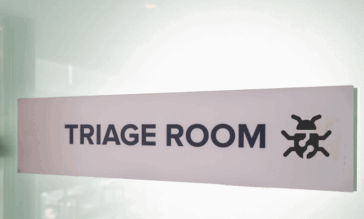Behind the MOAB: Analyzing the Largest Data Breach Compilation

News about enormous data breaches, such as those involving Xfinity and 23andme, keep appearing in the headlines. Incidents keep getting more in-depth, with companies hemorrhaging data – and money – from attacks. Consumers see this and are concerned about whether their data is next. Research by Cisco shows that 86% of consumers care about their data privacy and want to do more, but over half feel they cannot do more than they already do.
The fact is, businesses that collect and store data have a crucial role in this scenario. They are the custodians of consumer data and must act as responsible stewards. With cybercriminals continuously escalating their attacks, these businesses must build a robust cybersecurity foundation. This commitment to data security is not just a legal obligation but also a crucial aspect of maintaining consumer trust and business integrity.
In this article, we explore a recently discovered and immense data breach with billions of records and investigate ways that organizations can avoid being a part of future breaches.
What is the Mother of All Data Breaches?
Security researchers recently discovered a massive trove of breach information in an open online instance. Dubbed “Mother of All Data Breaches” (MOAB), this collection has billions of records, including victims’ usernames and passwords. Contrary to what the name might suggest, MOAB is not a singular data breach but rather an extensive compilation of data from previous breaches. It comprises data aggregated from about 2,500 separate data breaches, encompassing a staggering 15 billion records. The MOAB itself contains an overwhelming 26 billion records distributed across 3,800 folders.
According to Cybernews, “Researchers believe that the owner of the MOAB has a vested interest in storing large amounts of data and, therefore, could be a malicious actor, data broker, or some service that works with large amounts of data.” This information would likely have been resold on the dark web in smaller bundles or as one massive data repository.
How Did They Get These Credentials?
The MOAB credentials were not sourced from a single event but aggregated from multiple breaches. These breaches could have resulted from direct hacking efforts or, more likely, from malware infections.
Malware often originates from phishing attempts or is hidden in malicious files. The types of malware involved vary, with some being keyloggers that capture credentials for future attacks, while others are rootkits that provide cybercriminals direct access to compromised systems.
Due to the varied nature of these attacks, pinpointing all the data’s origins is challenging. Some records may be linked to known breaches, while others might result from undiscovered attacks.
A Black Eye for Companies Listed
The inclusion of companies in the MOAB casts a significant shadow over their security practices. While being listed does not definitively prove a breach, it suggests vulnerability, and companies, particularly those publicly traded, should investigate to ensure compliance with regulations like SOX. These companies will likely need to go back and review logs attempting to validate if a unique breach happened. If discovered, they will then have to follow their established processes to mitigate the issue.
Of course, discovering a breach has financial and reputational consequences, including regulatory fines and a damaged public image. Just by being included on the list, even if incorrectly, many companies will suffer some level of reputational damage as the burden is on them to prove they weren’t breached in the first place.
How to Avoid the Next Data Breach
With the advancements in cyber attack tactics and the exponential growth of attack surfaces, the infosec game has only gotten harder. There is no way to guarantee that your company will not be the next target, but there are ways to make it less likely. By developing a good cybersecurity foundation, it is less likely that attackers will be able to create a successful incident.
Building a Foundation
A strong security foundation is the best first step to preventing future breaches and being a part of future MOABs. This involves leveraging a defense-in-depth strategy, where multiple layers of protection are implemented. The assumption is that if one layer fails, others will compensate, maintaining the overall security integrity.
This foundation is augmented by implementing and following security best practices. This includes a robust patching regimen and a comprehensive vulnerability management program, which helps promptly identify and remediate security weaknesses. These strategies help make it harder for attackers to find holes to attack, making it less likely that a breach will happen.
Stopping Hidden Threats in Files
It is crucial to remember that not every breach can be prevented by following best practices. Many zero-day threats, especially those originating from hidden threats embedded in files such as malware, cannot be stopped by traditional cybersecurity controls. Existing antivirus (AV) is a foundational tool and does stop many instances of malware, with the caveat that the malware has been seen before. In fact, AV is highly effective at this and can discover known threats quickly and effectively. However, the challenge comes when cybercriminals develop new malicious code or alter existing ones so that the signature is no longer the same as the original. In these cases, AV completely misses the mark.
Augmenting AV tools and stopping new and novel threats requires something better. Content Disarm and Reconstruction (CDR) augments existing AV, adding a layer of protection that does address zero-day threats. CDR takes a different approach than AV, which relies on detecting a known threat. It sanitizes data by breaking it apart and rebuilding it from only known-safe components. The hidden dangers are automatically eliminated by rebuilding in this manner, creating a safe version of the data to pass along and share.
Building a Better Defense with Votiro
When creating a stronger cybersecurity foundation, you need a trustworthy partner. Votiro specializes in thwarting zero-day hidden threats in data by leveraging a unique combination of AV and CDR technologies. This approach provides a robust defense against invisible threats in seemingly benign content – many of which could be culprits of this recent MOAB. Votiro integrates AV’s immediate detection with CDR’s in-depth retrospective analysis, offering a comprehensive security solution. This dual strategy ensures the rapid identification and neutralization of known threats and maintains a detailed record of threats addressed by CDR, enhancing overall cybersecurity resilience.
Votiro helps protect organizations from future data breaches through its easy-to-integrate, API-driven solution. This approach offers immediate and robust protection and ensures a straightforward implementation process. The quick and efficient setup of their Software as a Service (SaaS) – achievable in just 10 minutes – and a similarly rapid 90-minute installation for on-premises systems ensures minimal operational disruption.
Contact us today to discover how Votiro can enhance your cybersecurity without hindering productivity. And if you’re ready to try Votiro, start today with a free 30-day trial.
News you can use
Stay up-to-date on the latest industry news and get all the insights you need to navigate the cybersecurity world like a pro. It's as easy as using that form to the right. No catch. Just click, fill, subscribe, and sit back as the information comes to you.
Sign-up Here!
Subscribe to our newsletter for real-time insights about the cybersecurity industry.



